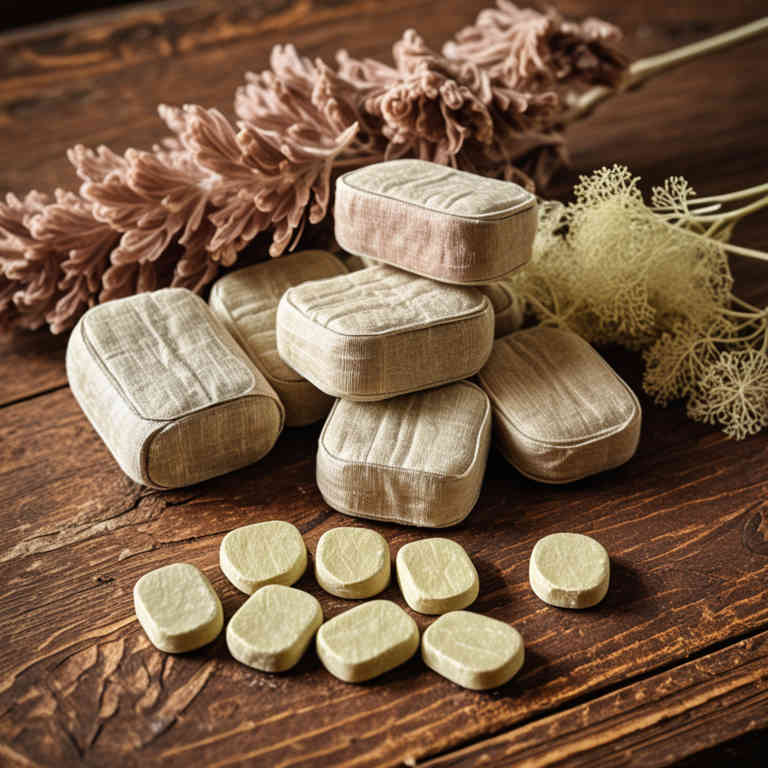Angelica sinensis lozenge for medicinal use

Angelica sinensis lozenge is a herbal preparation made from the dried root of the Angelica sinensis plant, commonly known as dong quai.
It is traditionally used in herbalism to support women's health, particularly for menstrual issues and hormonal balance. The lozenge form allows for easy consumption and can help soothe sore throats or oral discomfort. It is often prescribed to alleviate symptoms of premenstrual syndrome and menopausal discomfort.
This preparation is valued for its purported ability to promote circulation and enhance vitality.
Uses
Angelica sinensis lozenge has been used to support women's health, particularly in traditional Chinese medicine for regulating menstrual cycles and alleviating menopausal symptoms.
Historically, it was valued for its ability to nourish the blood and promote vitality, often used in formulations to treat anemia and fatigue. In modern contexts, it is still appreciated for its potential to ease digestive discomfort and respiratory issues, with its soothing properties making it effective for sore throats and coughs. Contemporary research suggests it may contain compounds with antioxidant and anti-inflammatory benefits.
However, its use should be guided by a healthcare professional to ensure safety and efficacy.
Benefits
Angelica sinensis lozenge has health benefits such as improving blood circulation, supporting hormonal balance, and enhancing overall vitality.
It is traditionally used in Chinese medicine to treat anemia and menstrual disorders due to its rich content of iron and other nutrients. The lozenge may also help alleviate symptoms of menopause, such as hot flashes, by regulating hormonal fluctuations. Additionally, it is believed to boost the immune system and promote respiratory health.
This herbal preparation is often used to support women's health and can be a natural remedy for various ailments.
Constituents
Angelica sinensis lozenge active constituents include ferulic acid, ligustilide, and adenosine.
These compounds contribute to the herb's traditional use in promoting blood circulation and supporting hormonal balance. Ferulic acid acts as an antioxidant, helping to neutralize free radicals in the body. Ligustilide is known for its potential anti-inflammatory and analgesic properties.
Adenosine may support cardiovascular health by improving blood flow and reducing oxidative stress.
Preparation
To make Angelica sinensis lozenge, first, gather the required ingredients: Angelica sinensis root, honey, and optionally, ginger or other herbs for flavor and additional benefits.
Clean and slice the Angelica root into thin pieces, then simmer it in water until it becomes soft and releases its active compounds. Strain the liquid and combine it with honey, stirring until the mixture thickens. Pour the mixture into molds or small containers and allow it to cool and solidify.
Store the lozenges in a cool, dry place for use as needed.
Side Effects
Angelica sinensis lozenge may lead to gastrointestinal discomfort, including nausea, vomiting, and diarrhea, particularly when taken in high doses.
It can also cause allergic reactions in individuals sensitive to the plant, manifesting as skin rashes, itching, or respiratory symptoms. Long-term use may interfere with blood clotting, increasing the risk of bleeding, especially in those taking anticoagulant medications. There is also a potential for liver toxicity, though this is rare and typically occurs with prolonged or excessive use.
As with any herbal preparation, it is important to consult a healthcare provider before use, especially for pregnant or nursing women and individuals with pre-existing medical conditions.